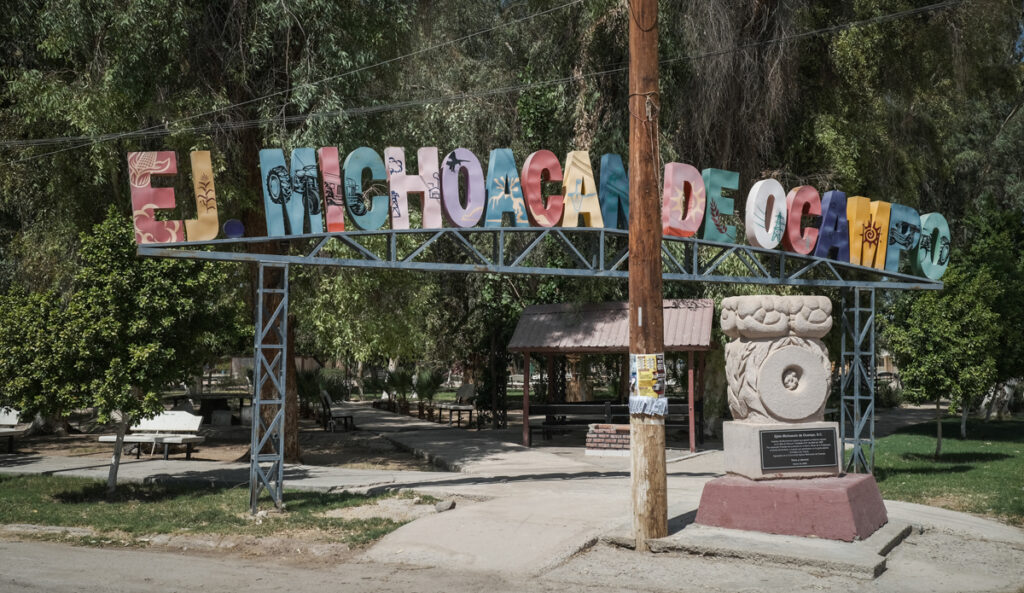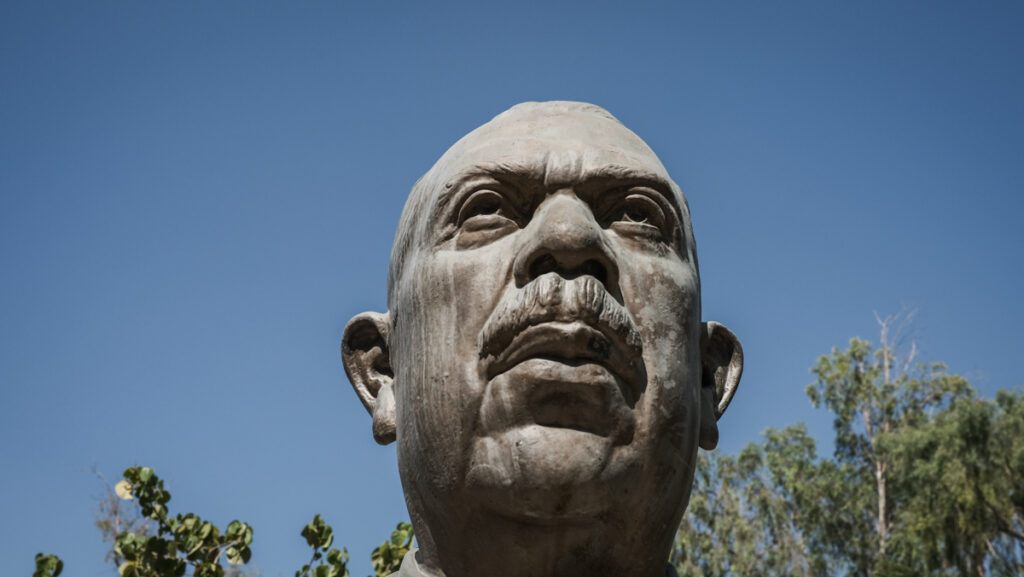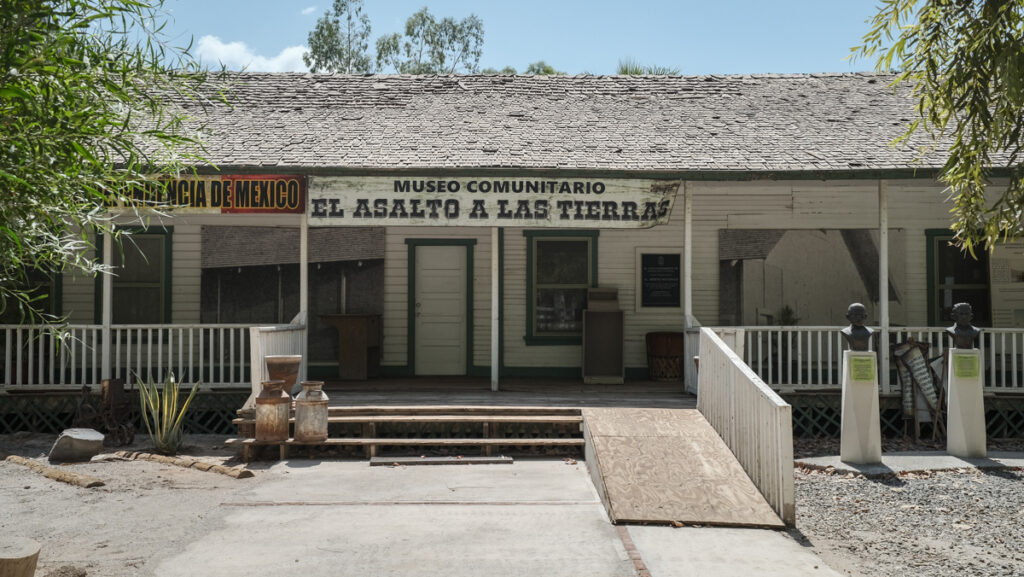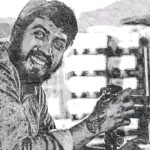We still owe a debt to the history of utopias built in Mexico. In fact, in any corner of this world, so inclined to think that it is not possible to live better. To live well. I am not talking about the valuation of these utopias or their results over time, I have never been a judge nor do I pretend to be one. I am talking about the process of creation -or what in other codes is the production- of dreams on Earth.
The stories of the lands where dreams were sown are still missing.
My colleague Alejandro Ruiz and I were on the trail of an imminent drought -perhaps already existing- in the valley of Mexicali, on the border between Baja California and Sonora. A beautiful land that received us kindly, with less heat than everyone announced and warned us about. After a few days of hustle and bustle in Tijuana, this place was splendid, new in many ways.
It was thanks to a geographer friend that we were able to contact some farmers who have spent a good part of their lives dedicated to the land. Growing cotton, wheat, alfalfa, in the middle of the desert, is no small thing, I think a lot about what it meant to the Nahua people many centuries ago to see a kind of flower and fruit grow from the driest stones. The possibility of life in the most inhospitable corner. Today it seems normal to see nopales everywhere, but if we stop to think that this plant also grows on the stones, perhaps you will come close to feeling what I felt when I saw the three men in jeans or caps, with those thick hands, the fruit of peasant labor.

They were the materialization of the sun in this small corner of the desert.
"I was born here, in the Durango ejido, but my family is from a ranch in La Piedad, Michoacán. My father, my grandfather and my uncles were from there," begins Don Gustavo Melgoza, as we sit down to eat in a restaurant where the specialty is flutes. "My mother was from the Yaqui Valley, in Sonora, where she met my father and they formed a family.
After his grandfather, Tranquilino Melgoza, arrived in the Mexicali Valley, a good farmer, he began to make a living trying to get some land and farm machinery to rent. This is how they settled in the middle of the cotton boom, back in the 50s and 60s.
Mexico was different, perhaps -without entering into false nostalgia or romanticization-, that moment was the end of the interest in strengthening an agricultural country. The false idea of industrial progress blinded the entire political class, especially the increase in profits obtained from "national progress". Corruption also changed, became more specialized, sharpened its aim.

Tranquilino, that Michoacan of whom his grandson speaks with pride, believed that in his home state he would not make much progress, or that his ranch would end in family disputes or some other misfortune. We don't know. But what we do know is that during the 1930s, General Lázaro Cárdenas promoted and personally supervised the expropriation of land, the construction of ejidos and irrigation districts in places as far away from the center of the country as Mexicali. We know that the Michoacán de Ocampo ejido was created and that today it is one of the most organized and where the ice cream and snow is called Janitzio.

We know that, in this ejido, for example, a community museum is calmly erected that carries out the name of the political process that formed it: the assault on the land. For what is a country if not the struggle for its lands?
In his article, The agrarian distribution in the Mexicali valley, the collective ejido and the integration of the territory: a Cardenist utopia.our geographer friend Iván Martínez, from Cachapoña, assures that "the recovery of more than one hundred thousand hectares -at that time in possession of the Colorado River Land Company- and its subsequent distribution not only meant an act of social justice for the peasants seeking land in that prosperous valley, but was part of Carden's revolutionary project to recover national sovereignty, promote the collectivization of the land and integrate the totality of the Mexican territory".

From this process also comes the story of Don Tranquilino and his family up to his grandson Don Gustavo, who on this hot day -although not too hot, it must be said- gave us the main details that make up the theft of water, the corruption that accompanies it and the need to organize and fight for this natural resource.
In his agitated mood, his gestures when speaking and the strength of his voice it was possible to get in touch with the spirit of the defense of the territory, not only because the agricultural world is his livelihood but also because defending agriculture is also defending life.
"Around 1976 -concludes Don Gustavo- the family returned to Michoacán, we went to see if there was anything left of my grandfather's ranch, and we found a very nice place, the people we lived with always took good care of us and we never lacked food. It is very nice to know where one has one's roots".

Heriberto Paredes Coronel (Tlaxcala, 1983), Mexican freelance photographer and journalist, dedicated to documenting organizational processes in indigenous and peasant communities, the search for missing persons and environmental issues in Mexico. He currently explores formats such as documentaries and podcasts without abandoning photography and text, where he explores new narrative routes. He has collaborated with national and international media, has directed short documentaries and is currently in the development phase of a feature documentary as well as writing a book that brings together more than a decade of work on the Michoacan coast. He lives in Pátzcuaro, Michoacán. Twitter @BSaurus Instagram @el_beto_paredes.
You may be interested in: Chuy, the self-defense


